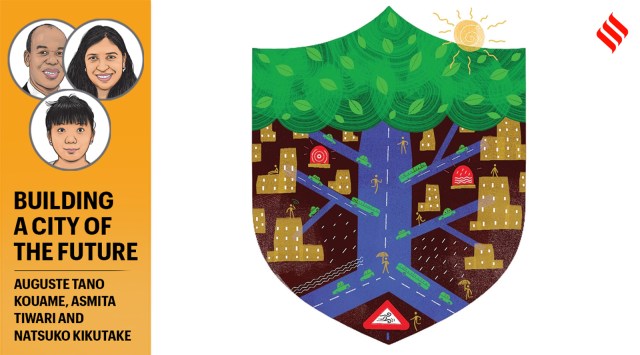
Cities hold the key to India’s future. In just five years from now, Indian cities are expected to generate over 70 per cent of new jobs. In another 25 years, the country’s urban population is likely to soar to almost a billion, with some megacities becoming larger than individual countries. Given this staggering pace of urban growth, it will be critical for India’s cities to draw up a blueprint for the future that will bring out the talent and entrepreneurship of its aspiring young generations.
Since a large share of urban infrastructure is yet to be designed and built, India’s cities have a narrow window of opportunity to prepare for the future. By 2070, they will need to build over 144 million new homes — more than double the existing stock — along with the transportation systems and municipal services that can cater to these unprecedented numbers.
Importantly, the new infrastructure will need to withstand the growing impacts of climate change. It will therefore be essential to make early investments in climate-resilient urban design and infrastructure to avert billions of dollars in annual damages while saving countless lives.
Today, floods pose a growing risk. As the construction of new housing and infrastructure proceeds apace, more than two-thirds of India’s urban dwellers will face the risk of pluvial or surface flooding, potentially racking up losses of $5 billion by 2030, and $30 billion by 2070. An integrated approach — one that demarcates high-risk areas as no-build zones, improves city-wide drainage, promotes nature-based solutions that can absorb excess rainwater, and installs flood warning systems — can help reduce this risk. Brazil, for instance, which is now 80 per cent urban, has moved beyond channelisation and structural flood control towards this more integrated approach. In India, too, some cities are walking the talk. Kolkata has adopted a city-level flood forecasting and warning system, while Chennai is improving storm water management and flood preparedness to support the most vulnerable populations.
Extreme heat is another significant challenge. Even today, the impacts of extreme heat, together with the urban heat island effect, are causing nighttime temperatures in major Indian cities to exceed those of surrounding areas by 3°C to 5°C year-round. With temperatures expected to rise throughout the 21st century, cities can build on Ahmedabad’s Heat Action Plan by increasing tree cover and canopies, replacing heat-intensifying roofs with easily doable cool roofs, and shifting the working hours for outdoor labourers. Scaling up these and other measures to India’s largest and most affected cities can not only avert hundreds of thousands of deaths every year, but also protect economic productivity, even during the peak summer months.
Currently, urban housing is extremely vulnerable to flooding, extreme heat, cyclones, landslides and earthquakes. Since more than half of the housing stock needed by 2070 is yet to be built, how these new housing units are planned, located, designed, constructed, and maintained will have a profound impact on cities and their inhabitants. Ensuring that new housing is part of compact city design with forward-looking planning can help make India’s cities more prosperous, inclusive and climate-resilient.
The efficiency of transportation is also vital for the productivity of a city and its people. Today, however, more than a quarter of India’s urban roads are directly exposed to some level of flooding. In some cities, if just 10 to 20 per cent of roads are inundated, more than half of their transportation systems are likely to be disrupted. Mapping flood risks, improving drainage, developing alternative routes for roads that become impassable, and investing in flood protection and road maintenance can help avert climate-induced disruptions to economic activity.
In addition, large investments in modernising municipal services, including waste collection and converting waste to energy, can improve the quality of air, water and soil, with far-reaching impacts on urban productivity and quality of life.
To address these challenges, cities will need to build institutional capacity, promote collaboration, and get the support of both the government and the citizens, for the undertaking is too large to go it alone. It will be equally important to promote private sector engagement to bring efficiency, innovative financing and technical capacity for driving this major endeavour.
Over the next three decades, the cost of developing climate-resilient and low-carbon urban infrastructure and services could amount to $10.95 trillion. While the investment is tremendous, it has the potential to save billions of dollars annually and transform urban living by attracting investment, generating new jobs, fostering innovation and unlocking the full potential of India’s people. The time to act is now.
Kouame is the World Bank Country Director in India. Tiwari and Kikutake are World Bank Specialists and the main authors of the World Bank’s new report, Towards Resilient and Prosperous Cities in India